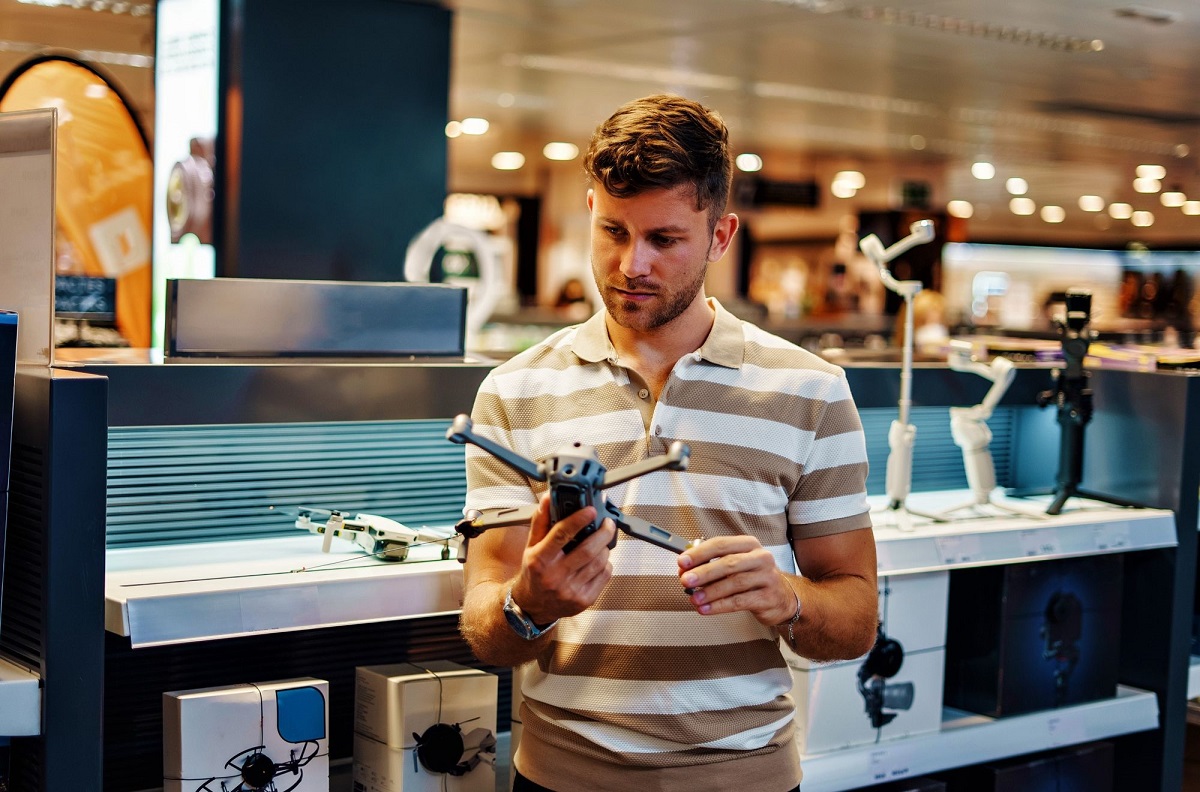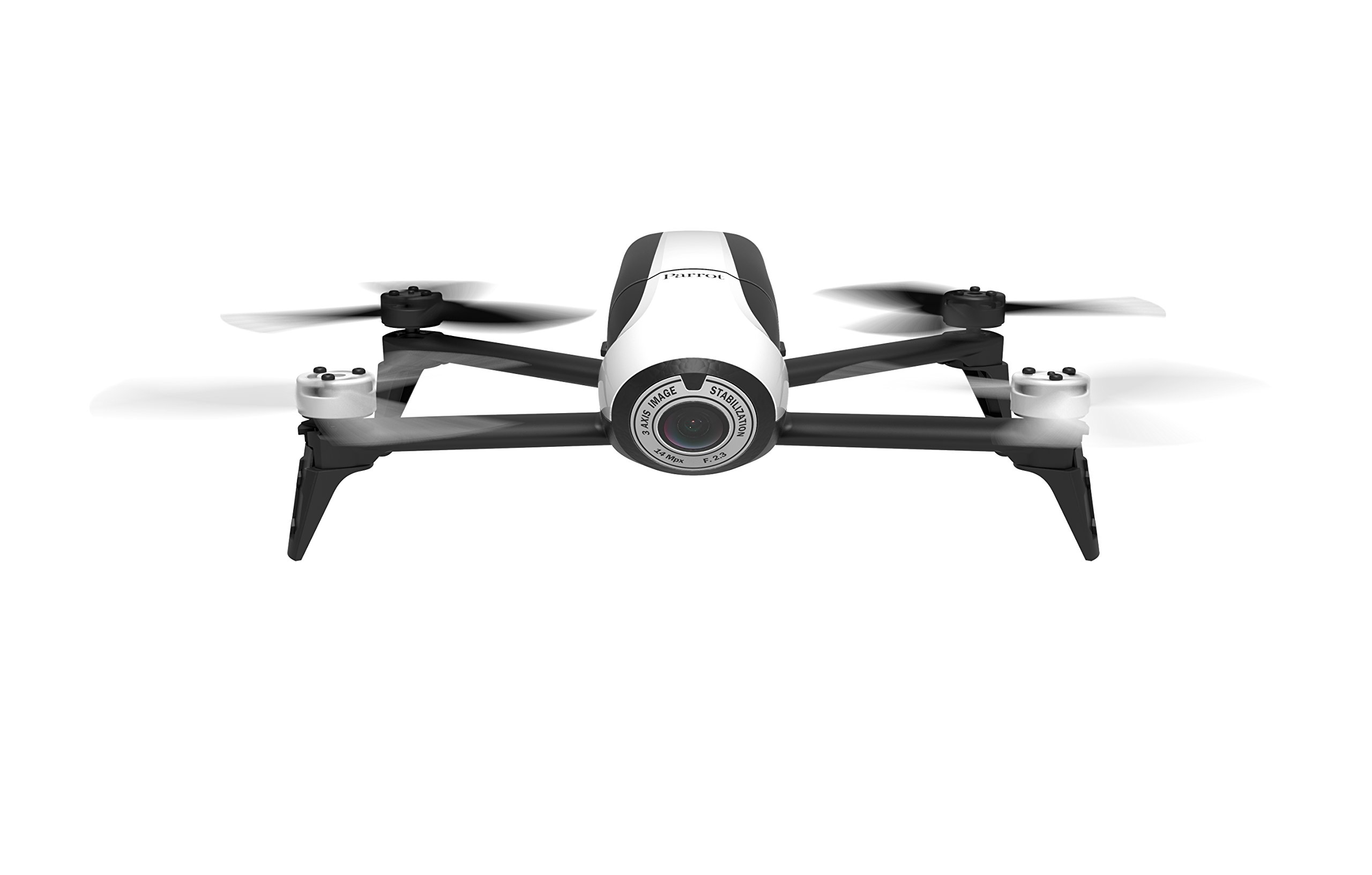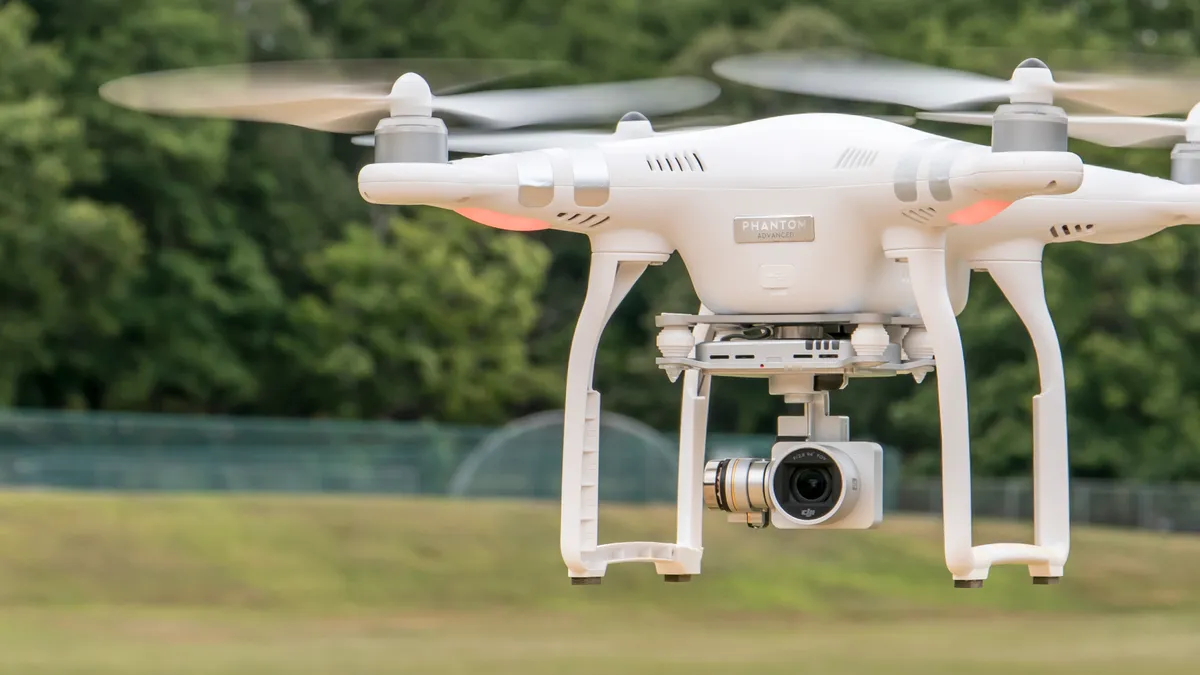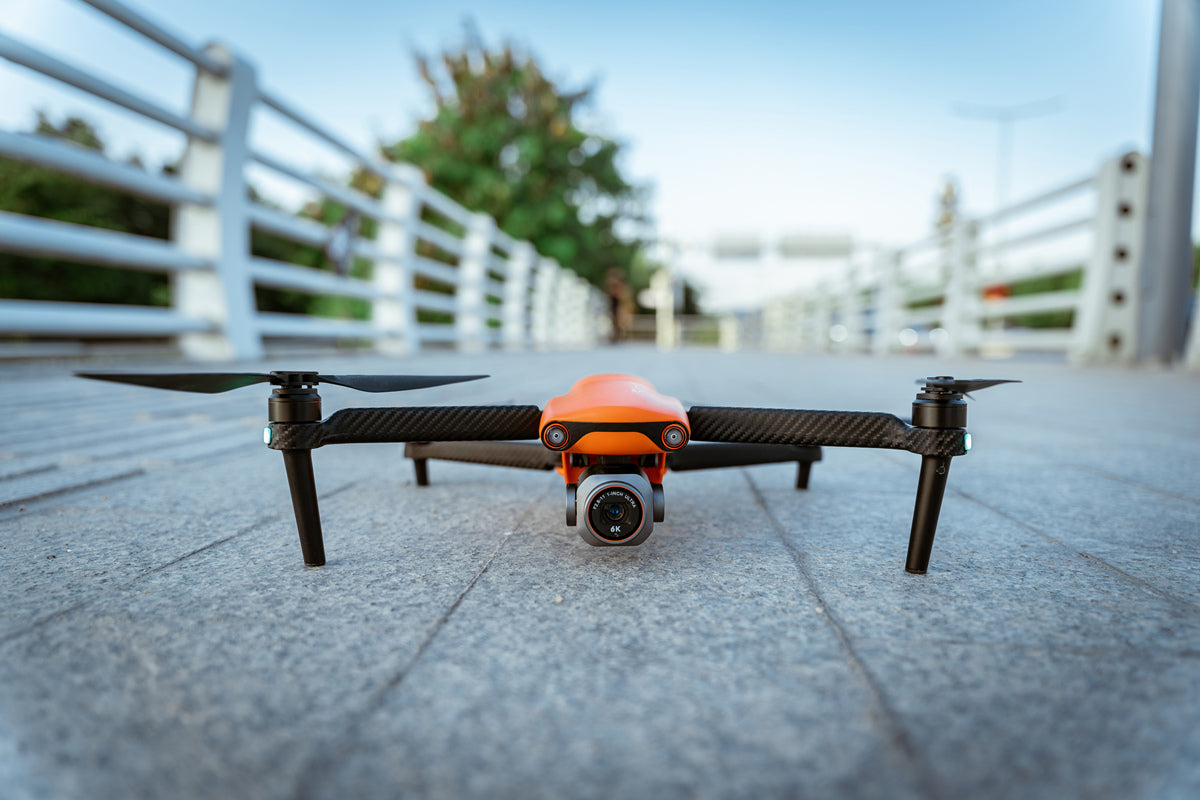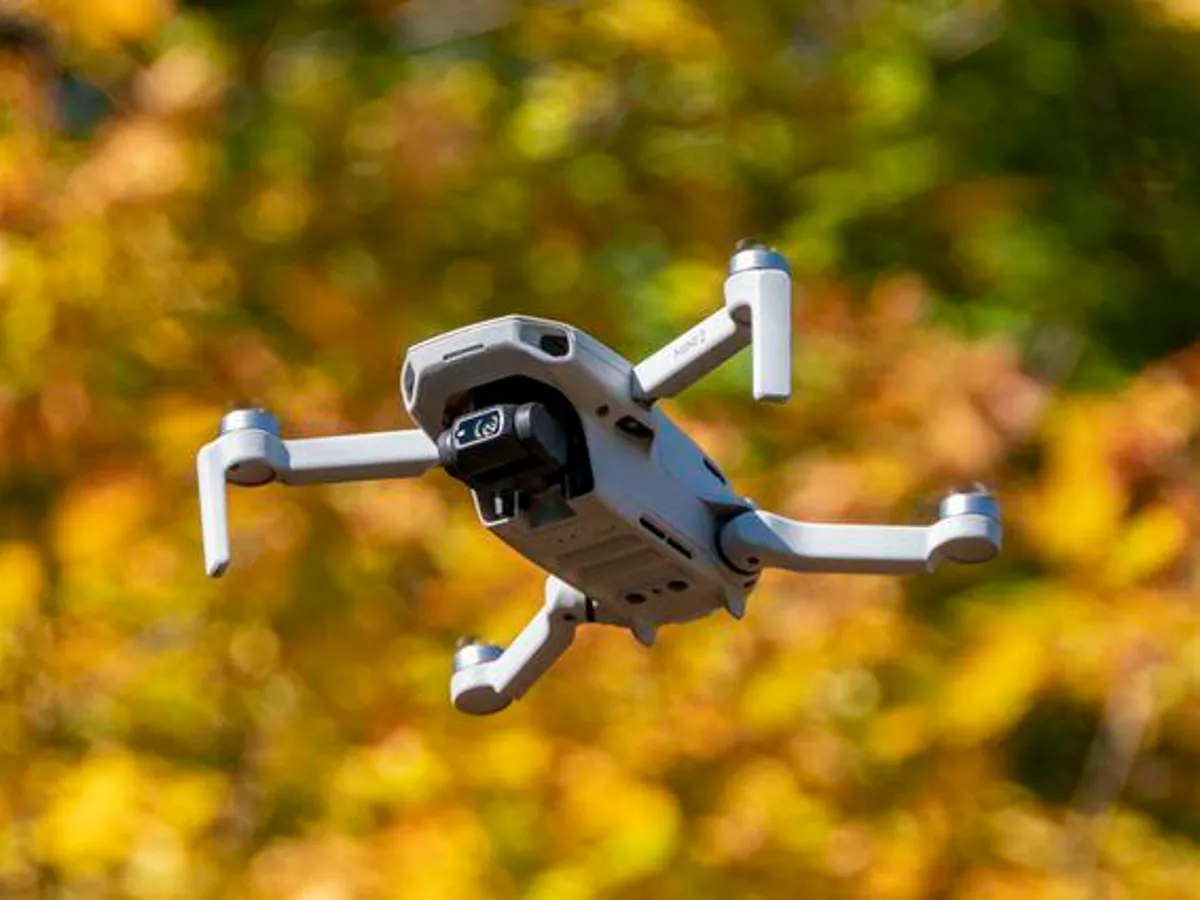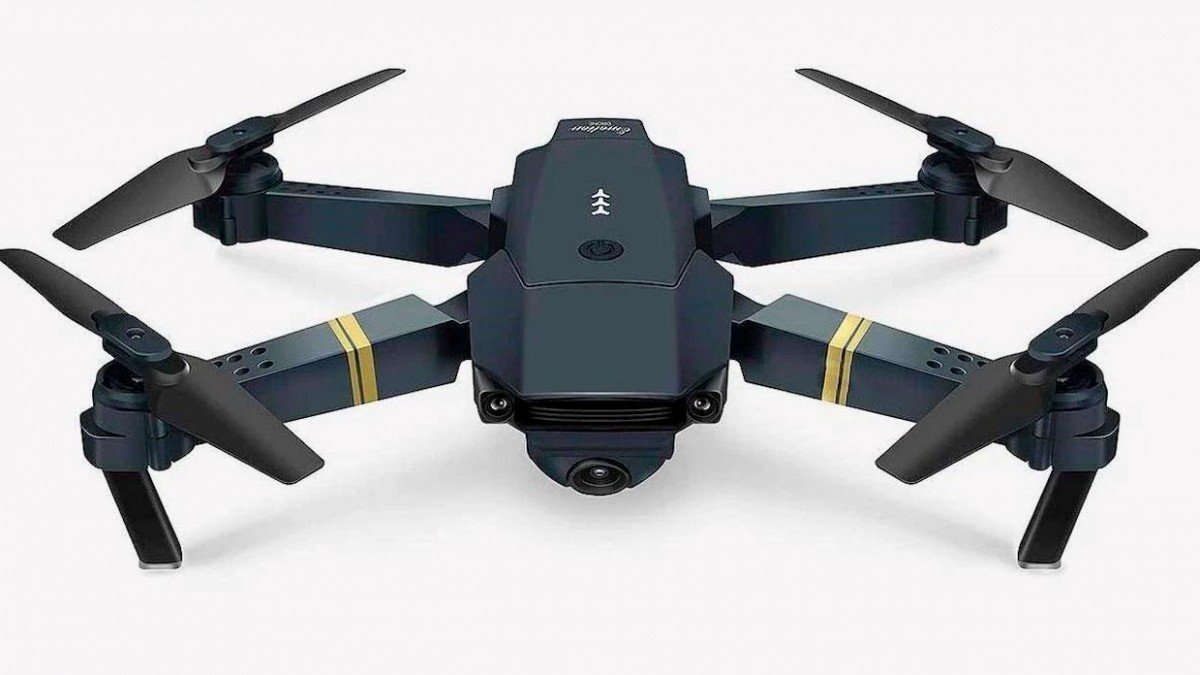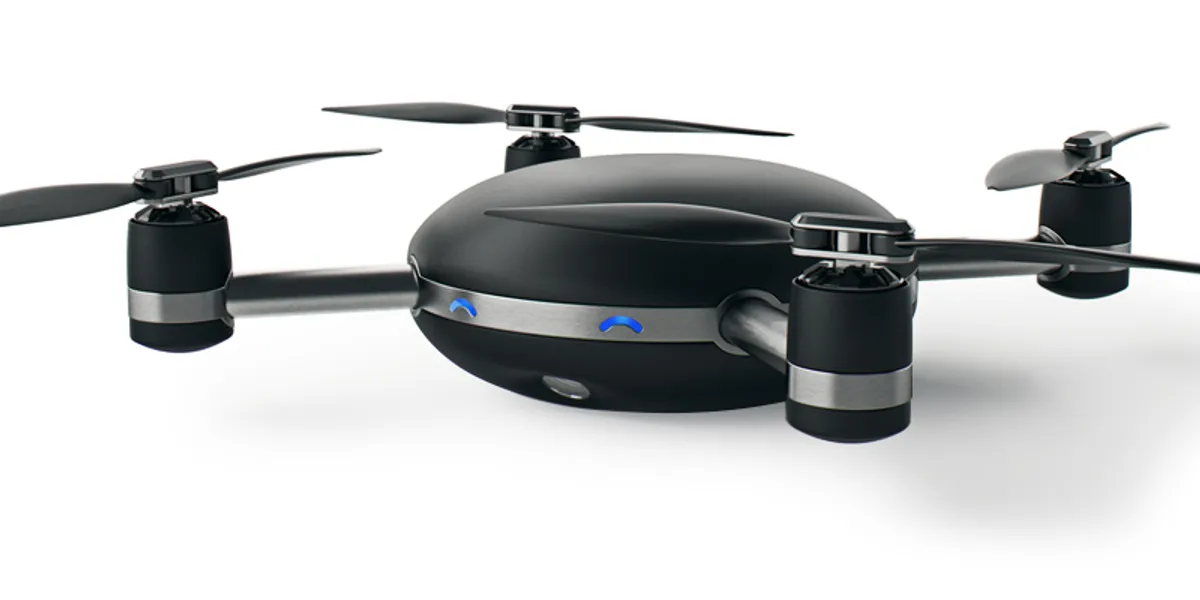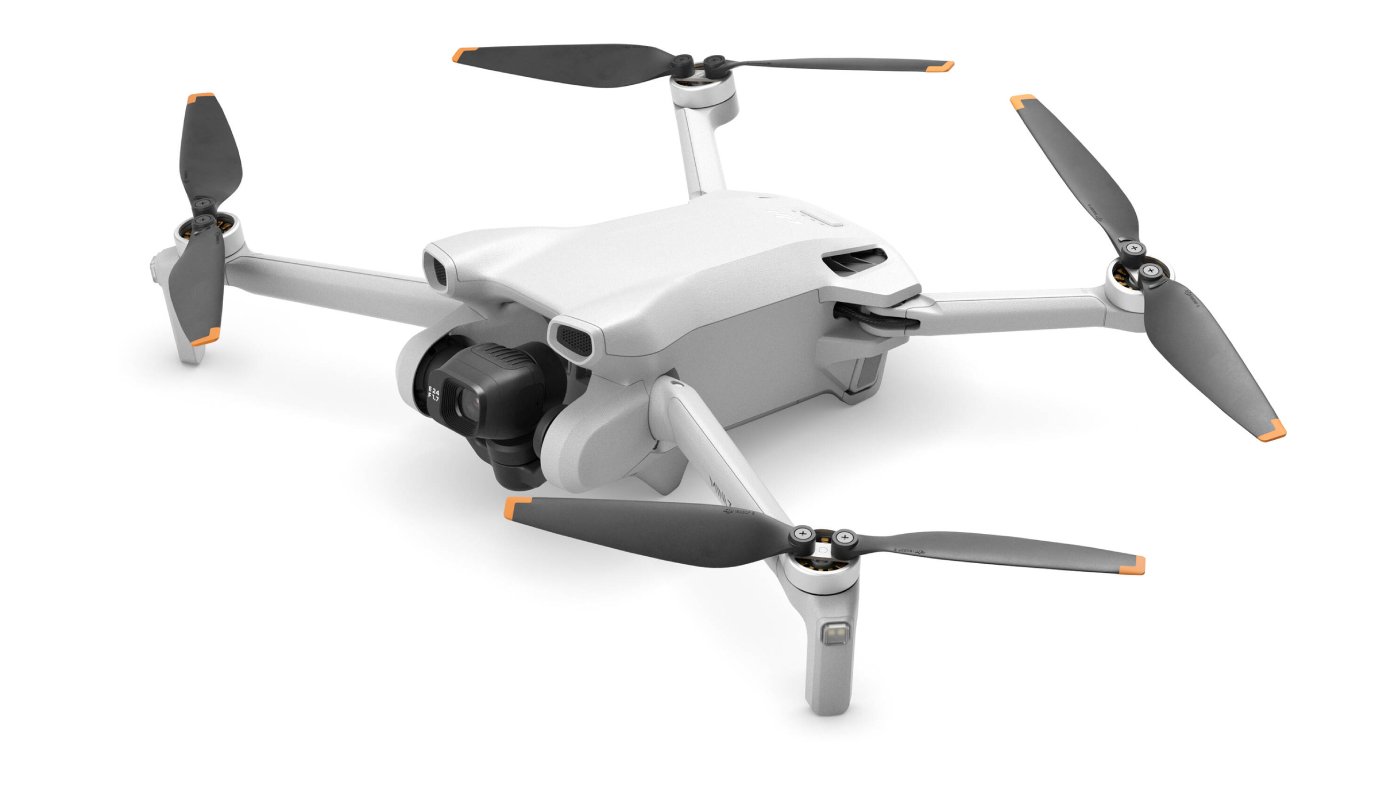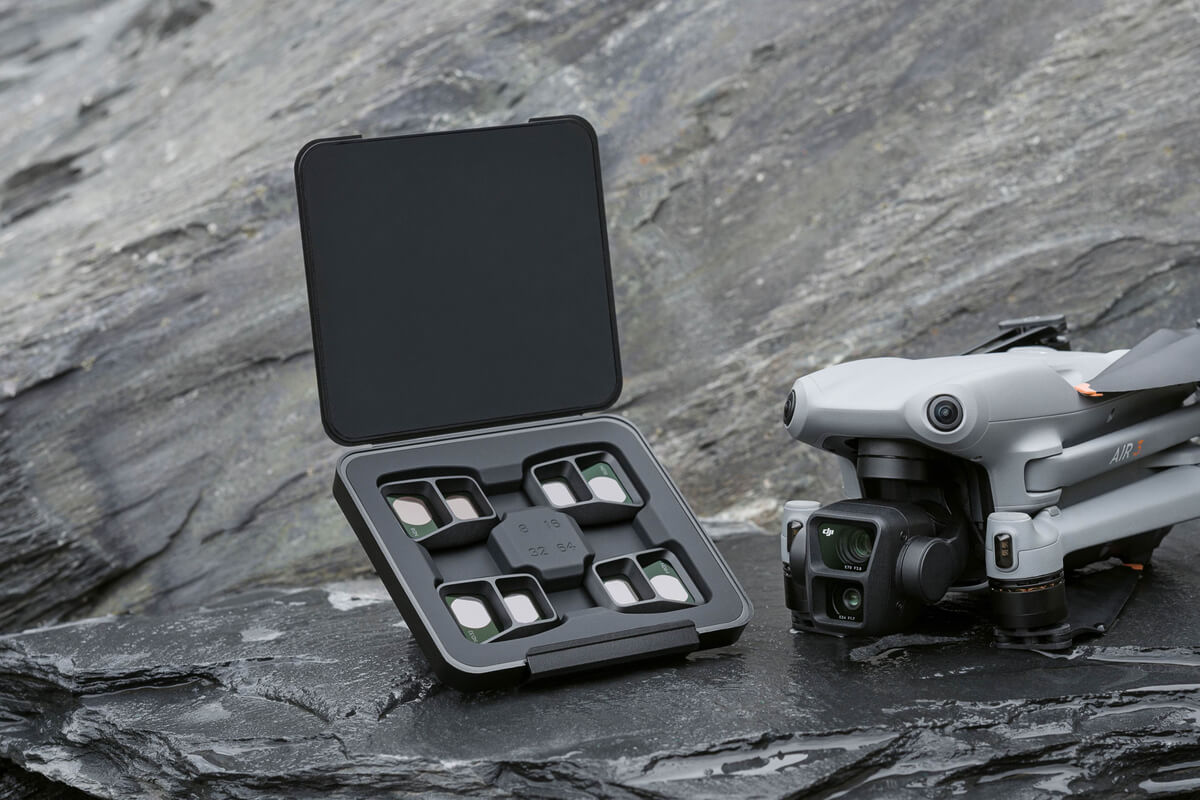Introduction
Welcome to the world of drones! Drones, also known as unmanned aerial vehicles (UAVs), have revolutionized various industries and recreational activities over the past decade. These small flying machines equipped with cameras and sensors provide a plethora of opportunities and benefits that were once unimaginable. Whether you are an enthusiast, a professional, or simply curious, there are countless reasons why you should consider buying a drone.
Unleashing the power of aerial photography and videography, drones offer a unique perspective that was previously only accessible to pilots or helicopter owners. With their ability to capture stunning images and videos from high altitudes, drones allow you to experience the world from a whole new vantage point. Whether you want to document your travel adventures, capture breathtaking landscape shots, or even create stunning cinematic films, drones provide endless possibilities for creative expression.
Not limited to photography, drones also serve practical purposes, such as real estate and property inspection. With a drone, you can easily conduct aerial surveys, inspect roofs, assess property damage, and present potential buyers with a comprehensive view of the property. This saves time, reduces costs, and enhances the efficiency of the real estate industry.
Furthermore, drones play a vital role in wildlife and environmental monitoring. They enable scientists and researchers to gather data, monitor animal populations, track migration patterns, and study delicate ecosystems with minimal interference. This valuable information contributes to conservation efforts and helps us better understand and protect our environment.
In times of emergencies, drones are indispensable tools for search and rescue operations. Equipped with thermal cameras and GPS capabilities, they can navigate through difficult terrain, scan large areas quickly, and locate missing persons. These aerial tools not only improve the chances of rescuing individuals in urgent situations but also ensure the safety of ground teams by providing crucial situational awareness.
Agriculture is yet another sector that has benefited greatly from drone technology. Drones equipped with advanced imaging sensors and precision navigation systems are used for crop monitoring. They can identify areas of disease, pest infestations, and nutrient deficiencies, allowing farmers to take proactive measures to improve crop yield and reduce the use of resources.
Beyond practical applications, drones offer endless possibilities for creative content creation and social media. With their ability to capture unique perspectives and stunning aerial shots, drones have become popular tools for photographers, videographers, and influencers to create captivating content for online platforms.
Moreover, drones provide hours of entertainment and fun. Whether you are flying them recreationally in open spaces or participating in organized drone racing events, these high-flying gadgets offer a thrilling and immersive experience for both beginners and seasoned pilots.
Furthermore, drones are excellent educational tools that can foster curiosity and learning. They provide an engaging and hands-on way to teach principles of physics, engineering, and programming. With drones, students can understand the concepts of flight dynamics, practice problem-solving skills, and explore the realm of robotics.
As technology continues to advance, the potential of drones is boundless. From delivery services to aerial transportation, drones are poised to reshape industries and create new opportunities in the future. Investing in a drone now means gaining a head start in embracing the exciting possibilities that lie ahead.
So, whether you are a professional in need of a powerful tool for your work or someone looking to explore a new and thrilling hobby, the myriad benefits that drones offer make them a worthwhile investment. The world of possibilities is just a flight away, waiting to be explored by you and your drone.
Aerial Photography and Videography
Aerial photography and videography have undergone a dramatic transformation with the advent of drones. In the past, capturing stunning aerial images and videos required expensive equipment and the expertise of professional pilots or helicopter rentals. With a drone, anyone can now become an aerial photographer or videographer, unlocking a world of creative possibilities.
Whether you are a professional photographer looking to expand your portfolio or an amateur with a passion for capturing breathtaking moments, a drone is a game-changer. Drones equipped with high-resolution cameras and stabilizing gimbals offer impressive image and video quality. They enable you to capture unique perspectives and angles that were once reserved for professionals, providing an immersive and captivating visual experience.
Using drones for aerial photography allows you to explore landscapes from above, revealing stunning details and patterns that are often overlooked from the ground. Imagine capturing a bird’s-eye view of a picturesque beach, a sprawling cityscape, or a majestic mountain range. Drones give you the power to freeze these moments in time, adding depth and scale to your photographs or videos.
With advanced features such as GPS tracking, obstacle avoidance, and pre-programmed flight paths, drones provide unparalleled control and precision in capturing the perfect shot. You can plan and execute intricate aerial maneuvers, fly smoothly along desired trajectories, and effortlessly make adjustments to composition and framing. The flexibility and versatility of drones allow photographers and videographers to unleash their creativity without limitations.
One of the advantages of aerial photography with drones is the ability to photograph subjects from various heights and distances. From a few feet above the ground to hundreds of feet in the sky, drones provide unmatched flexibility in composing shots. Whether you want to capture close-up details, panoramic vistas, or dramatic overhead shots, drones offer the freedom to experiment and achieve truly unique perspectives.
In addition to photography, drones are also capable of shooting high-definition videos. With their stable flight capabilities and gimbal stabilization systems, drones capture smooth and cinematic footage. From epic nature documentaries to stunning wedding videos, drones add a captivating and professional touch to any video production.
Whether you are a professional photographer, videographer, or simply someone who loves the art of visual storytelling, owning a drone provides you with a powerful tool to elevate your work to new heights. The stunning aerial photographs and videos you can create with a drone will leave a lasting impression on viewers, allowing them to see the world from a completely different perspective.
Real Estate and Property Inspection
When it comes to the real estate industry, drones have become an invaluable tool for property inspections and marketing. The ability to capture aerial footage and images has revolutionized how properties are presented to potential buyers and how inspections are conducted.
Traditionally, property inspections required manual assessments and physical visits, which could be time-consuming and costly. With drones, real estate agents and property inspectors can now conduct aerial surveys and inspections with ease. Drones equipped with high-resolution cameras provide a comprehensive view of a property’s exterior, allowing for a thorough assessment of its condition and potential issues.
Drone technology enables real estate agents to create captivating visual content to showcase properties. Aerial photographs and videos offer a unique perspective, highlighting the key features, layout, and surrounding amenities of a property. These visuals can be incorporated into property listings and marketing materials, attracting more potential buyers and increasing the chances of selling a property quickly.
Additionally, drones provide a cost-effective solution for inspecting rooftops, which is typically a challenging and hazardous task. Instead of using ladders or hiring specialized equipment, drones can provide a detailed aerial view of a property’s roof. This allows for a thorough inspection of potential damage, leaks, or issues with gutters and chimneys without risking the safety of inspectors.
With the ability to capture high-resolution images, drones enable property inspectors to identify and document any structural defects or damage, such as cracks, leaks, or deteriorating building materials. These detailed aerial images serve as valuable evidence and documentation for both buyers and sellers, ensuring transparency in real estate transactions.
Furthermore, drones can help potential buyers get a sense of the property’s surroundings and neighborhood. By flying the drone around the property, capturing aerial footage of nearby amenities, parks, and transportation links, real estate agents can provide a more comprehensive view of the property’s location and its proximity to essential facilities.
For large-scale commercial properties or multi-unit housing complexes, drones offer a time-efficient solution for inspecting the overall condition of the property. Instead of manually inspecting each building or unit, drones can capture aerial footage, allowing property managers to assess maintenance requirements, potential issues, or improvements that need to be addressed.
In the competitive real estate market, staying ahead with innovative tools and visually appealing content can make all the difference. Drones provide real estate agents, property inspectors, and buyers with a unique and efficient way to assess properties and make informed decisions. By utilizing drone technology, the real estate industry can streamline processes, improve marketing efforts, and ultimately enhance the overall buying and selling experience.
Wildlife and Environmental Monitoring
The use of drones in wildlife and environmental monitoring has opened up new possibilities for researchers, conservationists, and scientists around the world. Drones equipped with cameras, sensors, and GPS technology enable precise and efficient data collection, contributing to the understanding and preservation of wildlife and ecosystems.
One of the significant advantages of using drones for wildlife monitoring is their ability to access remote and difficult-to-reach areas. Drones can navigate through dense forests, fly over vast expanses of land, and hover above bodies of water—all without disturbing the natural habitats or endangering researchers. This provides a non-intrusive way to observe and study wildlife in their natural environments.
Aerial surveys conducted using drones provide valuable information about animal populations, behavior, migratory patterns, and habitat usage. Researchers can capture high-resolution images and video footage, allowing for accurate species identification, tracking, and monitoring. With this data, conservation efforts can be targeted and tailored to protect endangered species and their habitats more effectively.
Moreover, drones equipped with thermal imaging cameras offer valuable insights into animal behavior and population dynamics. These cameras can detect the heat signatures emitted by animals, making it possible to locate and track nocturnal and elusive species. The data obtained from thermal imaging can aid researchers in understanding mating rituals, nesting behaviors, and population sizes, contributing to conservation efforts and wildlife management.
When it comes to environmental monitoring, drones play a crucial role in assessing the health and integrity of ecosystems. With their aerial perspective, drones can identify changes in vegetation cover, detect deforestation activities, and monitor the impacts of climate change. This data helps scientists and policymakers make informed decisions to protect and restore ecosystems.
Additionally, drones equipped with specialized sensors can measure air quality, water quality, and soil health. By collecting real-time data on pollution levels, water contamination, and soil degradation, drones act as early warning systems for environmental hazards. This information is instrumental in identifying and preventing environmental disasters and ensuring the well-being of ecosystems and the communities that depend on them.
With the aid of artificial intelligence (AI) and machine learning algorithms, drones can even automate the analysis of collected data. This allows researchers to process large amounts of information more efficiently, leading to faster and more accurate insights. The combination of drones and advanced data analysis techniques has the potential to revolutionize wildlife and environmental monitoring, accelerating conservation efforts and fostering a deeper understanding of our natural world.
The use of drones in wildlife and environmental monitoring brings a new level of efficiency, accuracy, and accessibility to these important fields. By providing researchers with unprecedented aerial views, drones enable a more comprehensive understanding of wildlife populations, behavior, and the impacts of human activity. With continued advancements in drone technology and data analysis, the future of wildlife and environmental conservation looks promising.
Search and Rescue Operations
Drones have revolutionized search and rescue (SAR) operations, offering a powerful and efficient tool for locating missing persons in both urban and wilderness environments. Equipped with advanced technologies such as thermal cameras and GPS capabilities, drones have become invaluable assets in saving lives and improving the effectiveness of SAR efforts.
One of the key advantages of using drones in search and rescue operations is their ability to cover large areas quickly and efficiently. Drones can fly at varying altitudes, navigate through challenging terrains, and scan vast expanses of land or bodies of water in a fraction of the time it would take for ground teams to cover the same area. This rapid deployment and wide-reaching capability significantly increase the chances of locating missing individuals in a timely manner.
The thermal imaging cameras mounted on drones are particularly useful in locating individuals by detecting their body heat signatures. In cases where time is critical, such as during nighttime operations or in adverse weather conditions, drones equipped with thermal cameras can quickly identify and pinpoint the location of missing persons, improving response times and increasing the chances of successful rescues.
Moreover, drones provide crucial situational awareness to SAR teams by providing real-time aerial views of the search area. Ground teams can monitor the drone’s live video feed, enabling them to make informed decisions and adjust their search strategies accordingly. Drones serve as the “eyes in the sky,” providing a comprehensive and accurate assessment of the terrain and any potential hazards that may impede the progress of SAR operations.
In addition to their searching capabilities, drones are also used in delivering essential supplies and equipment to individuals in distress. With their ability to carry payloads, drones can transport first aid kits, water, survival gear, or communication devices to individuals who may be inaccessible by conventional means. This capability not only provides immediate aid but also enhances the safety of SAR teams by reducing the need for risky human interventions in hazardous environments.
Furthermore, drones are instrumental in providing support during natural disasters or large-scale emergencies. They can assess damage, identify areas of immediate concern, and facilitate the coordination and deployment of resources. Drones contribute to the overall effectiveness and efficiency of emergency response, saving valuable time and resources in critical situations.
As drone technology keeps advancing, additional features such as automated flight patterns and artificial intelligence algorithms continue to enhance their capabilities in search and rescue operations. These advancements improve autonomous flight capabilities, obstacle avoidance, and even the ability to analyze data collected during operations, further improving the effectiveness and efficiency of SAR efforts.
In summary, drones have transformed the landscape of search and rescue operations, offering a game-changing tool for locating missing individuals, conducting aerial assessments, and delivering vital supplies in times of crisis. Their ability to cover large areas quickly, provide real-time situational awareness, and access challenging terrains makes them an invaluable asset in saving lives and improving the effectiveness of SAR teams worldwide.
Agricultural Crop Monitoring
Drones have revolutionized agricultural practices by providing a powerful and efficient tool for crop monitoring and management. With their ability to capture detailed aerial images and collect data, drones offer valuable insights into crop health, growth patterns, and potential issues. This technology has transformed the way farmers monitor and optimize their agricultural operations.
One of the primary advantages of using drones for crop monitoring is their ability to cover large areas of farmland quickly and accurately. Unlike traditional ground-based methods, which are time-consuming and limited in scope, drones can fly over vast expanses, capturing high-resolution images or videos of crops from above. This enables farmers to analyze the entire field at a glance and identify any irregularities or concerns.
Drones equipped with multispectral and thermal cameras are particularly useful in assessing crop health and nutrient levels. By capturing images in various spectrums, drones can provide valuable data on plant stress, disease detection, or nutrient deficiencies. This information allows farmers to take proactive measures to address issues promptly, resulting in healthier crops and increased yields.
The data collected by drones can be processed and analyzed using advanced software programs. By employing artificial intelligence and machine learning algorithms, drones can generate detailed crop maps, identify crop variations, and even predict yield outcomes. These insights help farmers make data-driven decisions and optimize their farming practices, leading to improved productivity and reduced input costs.
Additionally, drones facilitate precision agriculture practices by allowing farmers to precisely target specific areas of their fields. By integrating drones with GPS technology, farmers can create precise flight paths and apply fertilizers, pesticides, or irrigation only where needed. This targeted approach minimizes environmental impact, reduces resource waste, and maximizes the efficiency of farming operations.
Furthermore, drones play a crucial role in assessing the impact of environmental factors on crop growth and productivity. By regularly monitoring weather patterns and tracking changes in soil moisture, drones provide real-time data that helps farmers make informed decisions regarding irrigation schedules, planting times, and crop rotation strategies. This adaptive approach to farming ensures optimal conditions for crop growth and mitigates the risks associated with unpredictable weather events.
With the integration of satellite imagery and data collected by drones, farmers can obtain comprehensive and up-to-date information about their fields. Combining these various data sources allows for a holistic view of crop performance, leading to more accurate predictions, improved pest management, and effective harvest planning.
In summary, drones have transformed agricultural practices by providing a cost-effective, efficient, and accurate tool for crop monitoring and management. Their ability to capture detailed imagery, collect data, and provide valuable insights into crop health and environmental conditions has revolutionized the way farmers make decisions and optimize their farming operations. By harnessing the power of drone technology, farmers can increase productivity, reduce inputs, and ultimately contribute to sustainable and efficient agricultural practices.
Creative Content Creation and Social Media
Drones have become a game-changer for content creators and social media enthusiasts, providing a new perspective and endless creative possibilities. With their ability to capture stunning aerial shots, drones have transformed the way visual content is created and shared, allowing users to elevate their social media presence and engage their audience in exciting new ways.
One of the primary advantages of using drones for content creation is the unique perspective they offer. Aerial shots add a sense of scale, depth, and grandeur to visual content, captivating viewers and making ordinary scenes appear extraordinary. Whether capturing vast landscapes, bustling cityscapes, or dynamic action shots, drones allow content creators to stand out in a sea of ordinary content.
Drones equipped with high-resolution cameras and stabilizing gimbals enable creators to capture smooth and cinematic footage. This professional-quality footage adds a polished and professional touch to videos, making them visually appealing and increasing the chances of capturing and retaining viewers’ attention.
The versatility of drones allows creators to experiment with different angles, heights, and movements. They can perform intricate maneuvers, fly through tight spaces, and capture shots that may be physically challenging or impossible for traditional cameras. This endless creativity opens up new possibilities for content creation, enabling creators to tell unique stories and showcase their creativity.
Social media platforms thrive on captivating visual content, and drones provide the perfect tool to create engaging posts. Whether it’s showcasing travel adventures, capturing breathtaking scenery, or documenting special events, drones offer a fresh and visually appealing perspective that resonates with audiences.
Furthermore, drones enhance storytelling by adding a dynamic and immersive element to social media posts. Creators can take their audience on an aerial journey, guiding them through scenic locations, showcasing architectural marvels, or highlighting hidden gems. This immersive experience creates a deeper connection with viewers and makes the content more memorable.
In addition to capturing stunning visuals, drones also allow creators to incorporate creative editing techniques in their content. With the abundance of editing software and apps available, creators can use drone footage to create captivating montages, time-lapse videos, or creative transitions. This flexibility adds a level of artistry and personalization to content, making it stand out in the competitive social media landscape.
Drones are not limited to video content alone; they also excel in capturing breathtaking aerial photographs. The high-resolution cameras mounted on drones capture stunning images from unique perspectives, allowing creators to share stunning aerial shots that leave a lasting impact.
Whether it’s for personal enjoyment, building an online presence, or creating content for clients, drones provide an exciting and powerful tool for content creators and social media enthusiasts. With their ability to capture breathtaking visuals, add a dynamic element to storytelling, and unleash endless creativity, drones have become an essential asset in this fast-paced digital era.
Fun and Entertainment
When it comes to fun and entertainment, drones have taken the excitement and thrill to new heights. Whether you’re a hobbyist looking for a thrilling pastime or someone seeking unique and memorable experiences, drones offer a wide range of activities that promise fun and entertainment for all ages.
One of the primary reasons why drones are popular for fun and entertainment is the sheer joy of flying. Controlling a drone, watching it soar through the sky, and maneuvering it with precision provides an exhilarating and immersive experience. Whether you’re flying in an open field, at the beach, or in a designated flying area, piloting a drone offers a sense of freedom and adventure.
Moreover, drones can be equipped with cameras that allow enthusiasts to capture stunning aerial photographs and videos of their surroundings. With their ability to capture unique perspectives and angles, drones offer an exciting way to document adventures, vacations, and special moments. The captivating visual content created from drone flights adds an extra element of enjoyment and creativity to the experience.
Organized drone racing events have gained popularity around the world, attracting participants and spectators alike. Drone racing involves flying high-speed drones through courses with obstacles, testing pilots’ skills in navigating tight turns and challenging terrain. These adrenaline-pumping races offer a competitive and thrilling experience for participants while providing entertainment for the audience.
Drone technology has also integrated with virtual reality (VR) experiences, allowing users to experience the exhilaration of flying through a first-person view. Through specialized VR goggles, users can immerse themselves in a simulated flying experience, feeling as though they are soaring through the sky. This combination of drone technology and VR adds a new dimension to entertainment, providing an unforgettable and immersive adventure.
Furthermore, drones can be used for light shows and aerial displays, creating mesmerizing visual spectacles. By synchronizing the movements of multiple drones equipped with LED lights, intricate patterns, and shapes are formed in the night sky. These drone light shows offer a captivating and magical experience, leaving spectators in awe of the synchronized dance of lights.
Drone technology has also extended into augmented reality (AR) games. Through smartphone apps, players can engage in interactive drone-based games where virtual objects or opponents are superimposed onto real-world environments. This merging of digital and physical worlds brings a new level of excitement and engagement to gaming experiences.
Additionally, drones can be used for aerial acrobatics and stunts, enabling skilled pilots to perform breathtaking tricks and maneuvers. From flips and rolls to precise aerial displays, these drone acrobatics demonstrate the agility and versatility of drones, leaving spectators amazed and entertained.
Whether it’s flying for personal enjoyment, participating in organized racing events, experiencing immersive virtual reality, witnessing dazzling light shows, or engaging in drone-based gaming, drones provide a world of fun and entertainment. With their diverse range of activities and the continual advancements in drone technology, the potential for exciting and thrilling experiences is only limited by the imagination.
Racing and Competitive Sports
Drone racing and competitive sports have emerged as exciting and adrenaline-fueled activities, attracting enthusiasts and spectators from around the world. The fast-paced nature, technical skills required, and the thrill of high-speed aerial maneuvers make racing and competitive sports with drones a popular and captivating experience.
Drone racing involves pilot-controlled drones flying through intricate courses at high speeds. Pilots navigate their drones through gates, obstacles, and challenging turns, showcasing their agility and precision. These races, often held in open spaces or specially designed tracks, provide an exhilarating experience for both participants and spectators.
The popularity of drone racing has led to the establishment of official leagues and competitions, with skilled pilots competing for titles and substantial prize pools. These organized events draw crowds of spectators, who witness the speed and skill of pilots as they maneuver their drones through challenging courses. The competitiveness and the pursuit of excellence in this emerging sport make it a thrilling and engaging experience for all.
One of the key elements that make drone racing and competitive sports accessible is its versatility and inclusivity. Racing drones come in various sizes and configurations, from ready-to-fly models for beginners to high-performance models for professional racers. This wide range of options allows enthusiasts to enter the sport at their own pace and gradually improve their skills over time.
Drone racing and competitive sports offer an adrenaline rush as pilots navigate drones at speeds that surpass traditional racing vehicles. The first-person view (FPV) technology, which provides real-time video transmission from the drone to the pilot’s goggles, adds an immersive and thrilling element. This FPV experience makes pilots feel as though they are in the cockpit, experiencing the exhilaration and speed firsthand.
The sport of drone racing also pushes the boundaries of technology and innovation. Pilots and manufacturers continually strive to develop faster, more agile, and more reliable drones. This ongoing evolution fuels advancements in drone engineering, flight control systems, and battery technology. The continuous quest for improvement in performance adds an exciting element to the sport and provides a platform for technological innovation.
Additionally, the rise of e-sports has extended to drone racing and competitive sports. Livestreaming platforms and online tournaments allow pilots to compete remotely, connecting with fellow racers from around the world. This virtual competition brings together a global community of drone enthusiasts, fostering camaraderie and friendly rivalries.
Drone racing and competitive sports also serve as a platform for creativity and innovation beyond traditional races. Freestyle drone flying competitions showcase pilots’ abilities to perform intricate aerial maneuvers, flips, and tricks, often accompanied by music and artistic cinematography. These freestyle events highlight the artistic and expressive aspect of drone flying, adding an extra level of excitement and entertainment.
In summary, drone racing and competitive sports offer an adrenaline-fueled, fast-paced, and immersive experience. From organized racing leagues to breathtaking freestyle competitions, the thrill of high-speed flight, technical skills required, and the pursuit of excellence make drone racing a captivating and inclusive sport. As the technology continues to advance, and the popularity grows, the future of drone racing and competitive sports looks even more promising.
Educational and Learning Purposes
Drones offer a unique and engaging platform for educational and learning purposes, providing hands-on experiences and fostering curiosity among students of all ages. From science and technology to arts and humanities, drones have found their place as an interdisciplinary tool that enhances learning and promotes innovative thinking.
One of the primary benefits of using drones in education is their ability to bring complex topics to life. By incorporating drones into lesson plans, educators can demonstrate abstract concepts in a tangible and visual manner. Drones provide a practical way for students to understand principles of physics, engineering, and mathematics, such as aerodynamics, trajectory calculations, and spatial awareness.
In STEM (Science, Technology, Engineering, and Mathematics) education, drones are used to teach coding, programming, and problem-solving skills. Students learn to program drones to perform specific tasks, such as following a designated flight path or avoiding obstacles. This hands-on experience with drones familiarizes students with coding logic and enhances their computational thinking abilities.
Furthermore, drones enable students to explore real-world applications of technology and innovation. From understanding the mechanics and functioning of drones to envisioning the potential use cases in various industries, students gain insights into emerging technologies and their impact on society.
In environmental studies, drones provide a valuable tool for studying landscapes, ecosystems, and natural resources. Students can monitor changes in vegetation, assess deforestation activities, and analyze patterns of land use. The hands-on experience of collecting and analyzing aerial data using drones enhances students’ understanding of the environment and the importance of conservation.
Moreover, drones can be used for historical and archaeological purposes. They allow students to capture aerial photographs and videos of historical sites, providing a unique perspective and revealing details that are not easily visible from the ground. Drones aid in the documentation, preservation, and analysis of historical landmarks, promoting a deeper appreciation for cultural heritage.
Drones also contribute to the arts and humanities by providing a new medium for creative expression. Students can explore aerial photography, videography, and storytelling, developing their artistic abilities and communication skills. Drones allow students to capture unique perspectives, experiment with composition and framing, and create visually appealing content.
Another educational aspect of drones is their role in promoting responsible and ethical use of technology. Students can explore topics of privacy, safety, regulations, and the ethical considerations surrounding drone use. Students learn to operate drones responsibly, follow local regulations, and consider the impact of their actions on society and the environment.
In summary, drones offer a wide range of educational benefits, making them a valuable tool for promoting academic engagement and fostering a love for learning. Whether it’s through hands-on experiments, interdisciplinary exploration, or creative expression, drones provide an interactive and immersive learning experience that inspires students to think critically, collaborate effectively, and embrace the limitless possibilities of technology.
Future Potential and Technology Advancements
The future potential of drones is limitless, with ongoing technological advancements and innovative applications on the horizon. As the technology continues to evolve, drones are expected to play an increasingly significant role in various industries and everyday life, transforming the way we live, work, and interact with the world.
One area where the future potential of drones is particularly promising is in delivery services. Companies are exploring the use of drones for delivering packages, revolutionizing the logistics industry. With drones capable of navigating through urban environments and delivering goods efficiently, the delivery process can be faster, more cost-effective, and environmentally friendly.
Aerial transportation is another frontier that drones are poised to explore. With the development of drone taxis and unmanned passenger drones, commuting through the air may become a reality in the not-too-distant future. Drones can provide an innovative and efficient alternative to traditional transport methods, reducing congestion on the ground and opening up new avenues for transportation.
As the technology advances, drones are becoming more autonomous and intelligent. With the integration of artificial intelligence (AI) and machine learning algorithms, drones can analyze data in real-time, make informed decisions, and adapt to changing environments. This opens up possibilities for applications such as autonomous surveillance, disaster response, and even collaborative swarm missions, where multiple drones work together to accomplish complex tasks.
Moreover, advancements in drone battery technology are increasing flight times and expanding the range of operations. Longer flight durations allow for more extensive coverage, making drones even more efficient and useful in a variety of applications. Combined with improved charging infrastructure, drones can operate for extended periods, powering services like infrastructure inspection, wildlife monitoring, and aerial surveying.
Miniaturization and advancements in sensor technology have opened doors for micro-drones, tiny drones with lightweight and compact designs. These micro-drones can be deployed in confined spaces, indoor environments, or situations where larger drones are impractical. With their small size and maneuverability, micro-drones have potential applications in areas such as search and rescue missions, inspections in tight spaces, and monitoring in urban environments.
The integration of augmented reality (AR) and virtual reality (VR) with drones is another exciting avenue for future developments. AR and VR technologies provide immersive and interactive experiences, and when combined with drones, they enable users to explore virtual worlds or overlay digital information onto the physical environment. This fusion of technologies has the potential to revolutionize gaming, education, and even professional industries like architecture and design.
Furthermore, advancements in materials and construction techniques are making drones more lightweight, durable, and resilient. Carbon fiber frames, flexible wings, and improved propulsion systems contribute to the overall performance and reliability of drones. These advancements enhance their capabilities, making them more suitable for demanding tasks, adverse weather conditions, and long-duration missions.
With each passing year, we witness new breakthroughs and applications for drones. From the exploration of space and monitoring of wildlife to the delivery of essential goods and services, the potential of drones is continuously expanding. As technology continues to evolve, the future holds countless possibilities for drones to shape our lives, industries, and the world around us.
Conclusion
Drones have undoubtedly transformed various industries, recreational activities, and educational practices. From capturing stunning aerial photographs and videos to aiding in search and rescue operations, drones offer a wide range of benefits and opportunities that were once unimaginable.
Aerial photography and videography allow us to see the world from a whole new perspective, capturing breathtaking images and cinematic footage that were once limited to professionals. Real estate professionals can conduct property inspections and showcase properties to potential buyers more efficiently, while researchers and conservationists can use drones for wildlife and environmental monitoring, leading to a better understanding and protection of our natural world.
In search and rescue operations, drones provide valuable support by covering large areas quickly, locating missing individuals, and providing real-time situational awareness to rescue teams. In agriculture, drones assist in monitoring crop health, optimizing farming operations, and promoting sustainable practices.
For entertainment and recreational purposes, drones offer thrilling experiences through drone racing, aerial acrobatics, and immersive virtual reality or augmented reality experiences. Drones also serve an important role in education, allowing students to explore STEM concepts, environmental studies, historical preservation, and creative expression.
The future potential of drones is boundless. Delivery services, aerial transportation, and autonomous operations are just some of the exciting developments on the horizon. Advancements in battery technology, sensor capabilities, miniaturization, and materials will continue to expand the possibilities for drone applications.
As we embrace the ever-evolving capabilities of drones, it is important to recognize the ethical and responsible use of this technology. Adhering to regulatory guidelines, respecting privacy, and considering the environmental impact of drone activities are essential for their continued positive integration into our lives.
In conclusion, drones have revolutionized industries, transformed recreational activities, promoted educational exploration, and opened up endless possibilities for the future. By harnessing the power of drone technology, we unleash creativity, increase efficiency, and create opportunities for innovation. Embracing this transformative technology allows us to explore new horizons and experience the world from a whole new perspective.







